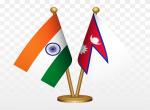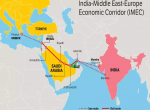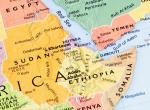Because of the development of science and technology, human beings have increased their access to the Moon and Mars and they have even been dreaming to reach the Sun. But, is it not a great pity that while they are performing such great miracles on the one hand, they have not been able to combat hunger on the very planet they exist on? Hunger has been the greatest curse that mankind has had to face not only in the Kaliyuga but also in the past in the Dwapar, the Treta or even in the Satyayuga.
Hunger reduction through easier access to sufficient food is one of the basic fundamental rights of the people. Yet, adequate efforts have not been made to create awareness in the society about the need to combat this problem. However, two notable institutions, the Welthungerhilfe and the Concern Worldwide, have taken the initiative to fill in this void; for which they have been publishing Global Hunger Index (GHI) Report for last 20 years beginning from 2000. The GHI reports are important documents that not only enable policy makers to compare the level of hunger in different groups of countries, but also presents the need for intervention. It is particularly useful especially for the underdeveloped and developing countries, which largely face the problem of food security.
Significantly, the GHI also proves useful to the United Nations (UN), which, under its Sustainable Development Goals (SDGs) programme, envisages bringing the curse of hunger to zero levels by 2030. The immense utility of the GHI comes from the fact that it provides the essentially needed statistics on food security and nutritional status among the UN member countries. This helps the UN and the affected countries to plan and adopt suitable strategies to address hunger.
Being a member of the UN, Nepal is committed to achieving 17 SDGs. The SDG 2 demands ending hunger, achieving food security and improving the nutrition status of the people by 2030.1 It also focuses on the need to enable the people to have access to safe, nutritious and sufficient food in the entire year. For this, it was felt necessary to double the agricultural productivity and the incomes of small-scale food producers through the sustainable development of the agricultural sector.2
Main Theme of SDG Report
As presented in the GHI report, the number of hungry people at the global level increased from 785 million to 822 million during the three years period between 2015 and 2018. Of the 117 countries, wherein hunger-related calculations have been made, 43 countries are such that still face the brunt of the problem. Nevertheless, there are a few countries that have successfully addressed the hunger problem. This also shows that given the will a country might address the problem of hunger by adopting proper policies.
GHI Report in Nepalese Context
Despite the importance of GHI Report at the global level, it was for the first time that it was launched on December 15, 2019 in Kathmandu with great enthusiasm by the Local Initiatives for Biodiversity Research and Development (LI-BIRD) and welthunger hife (WHH), Nepal. Of the 117 countries, Nepal ranks at 73rd position.
In the GHI 2019, all the 117 countries in which hunger calculations were made, have been divided into five categories: Extremely Alarming (over 50), Alarming (35-49.9), Serious (20-34.9), Moderate (10-19.9) and Low (less than 9.9). Among these categories, Nepal was found to be in the Serious (20.8) category in 2019. Earlier in 2000, Nepal’s hunger was at Alarming (36.8) level, which improved to 31.3 in 2005 and 24.5 in 2010. All such factors as the reduction in child stunting from 56.6 per cent in 2001 to 40 per cent in 2011 helped in reducing the level of hunger in the country. Additionally, the growth in household assets, maternal education, sanitation and health and nutrition counts also helped in addressing the hunger.
Significantly, the pace of hunger reduction in Nepal is faster in comparison to some other countries of South Asia, such as Bangladesh (88), Pakistan (94), India (102) and Afghanistan (108). Nevertheless, the country is behind Sri Lanka (66) and Myanmar (17.1).
Challenges Ahead in Nepal
Hunger reduction still remains a challenging issue in Nepal. Over the years, the climate change has greatly affected all the three ecological regions of the country, including the Himalayan region, the hills and the plain land of Terai, which has been affecting food production. Incidentally, the main theme of the GHI 2019, which is the latest one in its series, focuses on climate change, which has substantial impact on food production and resultantly on food security and hunger reduction in the world.
Glacier formation in the Himalayan region has started shrinking fast. A recent report published in the Telegraph reveals that rising temperatures have been posing threat to the Himalayan glaciers which is the source of water for millions of people in the region. Because of the melting ice on the Himalayas due to rising temperatures, plants have started growing in and around even the formidable Mount Everest, the peak of the world. The expanding vegetation coverage in the Himalayas is likely to reduce the supply of water from the region that could affect the life of 1.4 billion populations.3 Without water, agricultural activities are not possible.
Similarly, the depletion of traditional forest resources on the one hand and the uncontrolled construction activities in the hills, have led to massive landslides and soil erosion in the region. Together with this, the destruction of forest and encroachment of the foothills of the Himalayas popularly known as, Chure and Bhawar regions, have caused fast depletion of underground water in the Terai. Such problems have also led to significant decline in precipitation. Over and above, it also aggravated the problems of floods and flash floods in the Terai region.
The rivers that earlier used to bring manure in the Terai from the hills and the Chure/Bhawar regions owing to the existence of dense forests, are now bringing mere silts affecting the productivity of agricultural land. Because of the rapid rise of river beds, the silts are easily spread in different directions. This has not only affected agricultural land but also poses threat to life and property of the people, especially during the floods. Thus, the alluvial agricultural land in the Terai is gradually turning into desert.
Because the frequency of floods and flash floods has increased due to the inundation of forest resources in the hills and the Chure regions, many of the traditional settlements in the downstream Terai that used to be quite safe for habitation, are today facing an existential problem.
Also, the way the agricultural land is being covered into settlements through plotting has squeezed its area. Misuse of pesticides and chemical fertilizers in the agricultural land have also aggravated the production of quality food.
Reports indicate that nearly 60 percent of cultivated land in Nepal, has been abandoned due to out-migration of population, mainly of men to cities and overseas countries for earning their livelihood. Estimates are that nearly 1,600 youth are leaving the country for jobs in the foreign countries each day. 4 Those left behind are either elderly people or women and children, who are not able to engage themselves in agriculture farming. Moreover, rapid urbanization too has increased number of non-food producing population causing increased food shortage, higher imports leading to higher trade deficit in the country.
In absolute terms, agricultural productivity is still very low in Nepal. How to increase agriculture productivity, remains a major challenge. Also, attracting youth to the agriculture sector and engaging them in agribusiness, as elsewhere in the region, also remains a challenge. On top of this, there is no proper poverty mapping in the country. In 2018-19, US$260 million budget of Nepal government was frozen for the failure to identify the target group on account of poor poverty mapping.
Climate Resilience Measures
To combat hunger, the government of Nepal has made plans to address climate change and disaster risk management that pose serious threat to food production. Plans are also afoot to spend US$40 million from GCF and US$50 million through FAO to promote climate compatible development. Besides, Nepal is also planning to make efficient use of water, apart from focusing on agro-biodiversity conservation and judicious use of pesticides to increase production of healthy food in the country. The government has been implementing Multi-Sector Nutrition Plan (2018-2022) to enhance nutritional status in the country.
Conclusion
There have been achievements in hunger reduction at the global level ever since 2000. But the world is still to go a long way in achieving ‘Zero Hunger,’ which is one of the important goals of SDGs. In the case of Nepal, hunger cannot be addressed in a sustainable manner until the ecologies of the three regions; the Himalayan region, the hills and the Terai, are protected. The country needs to work on a war footing to see that the ecological balance of these regions is maintained so as to address hunger in a sustainable manner.
Forecasting mechanism also needs to be improved in different provinces of the country to keep the people in the loop about the rainfall, floods, flash floods, etc. Because of the climate change, the Parsa and Bara districts in the Terai experienced tornado last year (2019), which was unheard of in the entire history of the country. This caused huge loss of life and property in the region. Had there been a strong forecasting mechanism, the magnitude of the problem could have been far less. In the present federal system, each of the seven provinces in the country now need to develop strong meteorology stations, which are so critically important to ensuring food security and providing safety to life and property of the people.
References
- Government of Nepal, National Planning Commission. Nepal: Sustainable Development Goals – Status and Roadmap: 2016-2030. Kathmandu, 2017, p. 27.
- Ibid.
- Gatten, Emma, “Plants growing around Everest as ice melts on Himalayas,” The Telegraph, January 10, 2020.
- Shakya, Bandana, “Achieving zero hunger in Nepal,”The Kathmandu Post, January 15, 2020.
(The paper is the author’s individual scholastic articulation. The author certifies that the article/paper is original in content, unpublished and it has not been submitted for publication/web upload elsewhere, and that the facts and figures quoted are duly referenced, as needed, and are believed to be correct). (The paper does not necessarily represent the organisational stance... More >>
Image Source: http://www.la.one.un.org/sdgs/sdg-2-zero-hunger











Post new comment